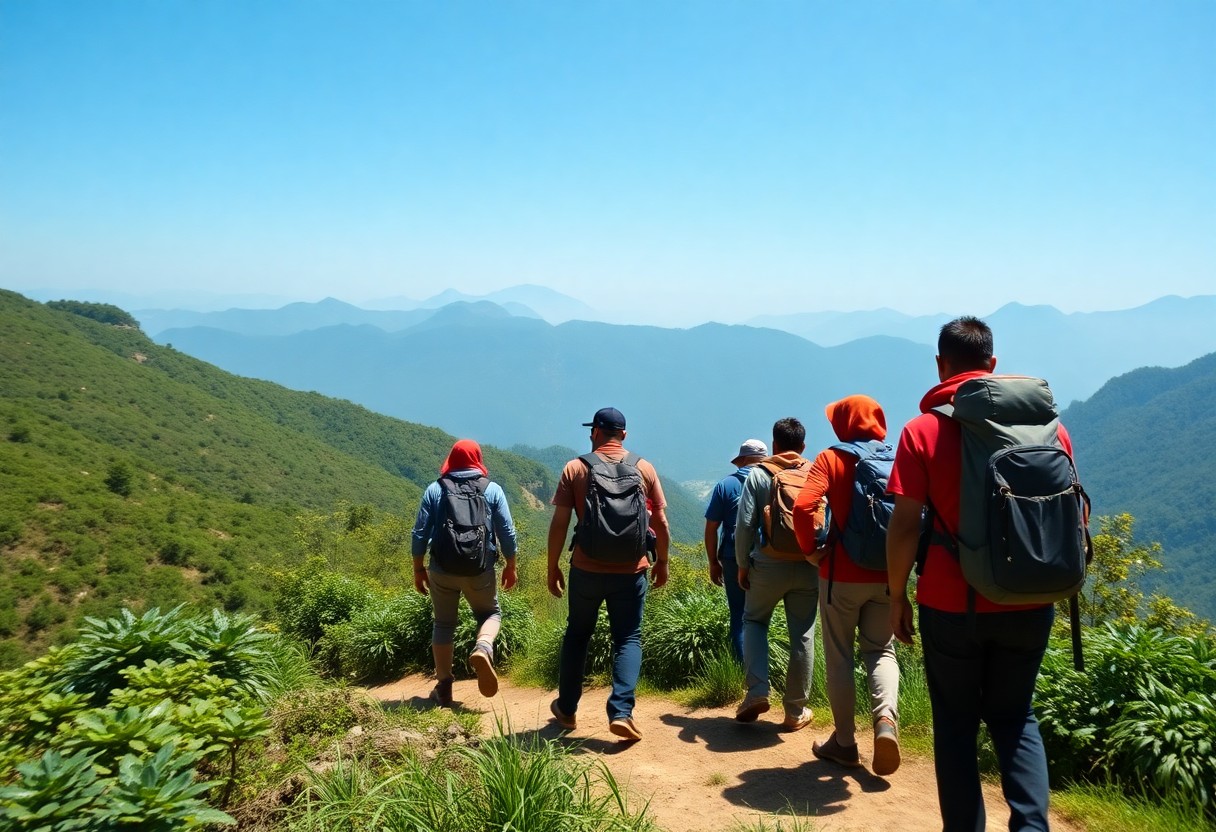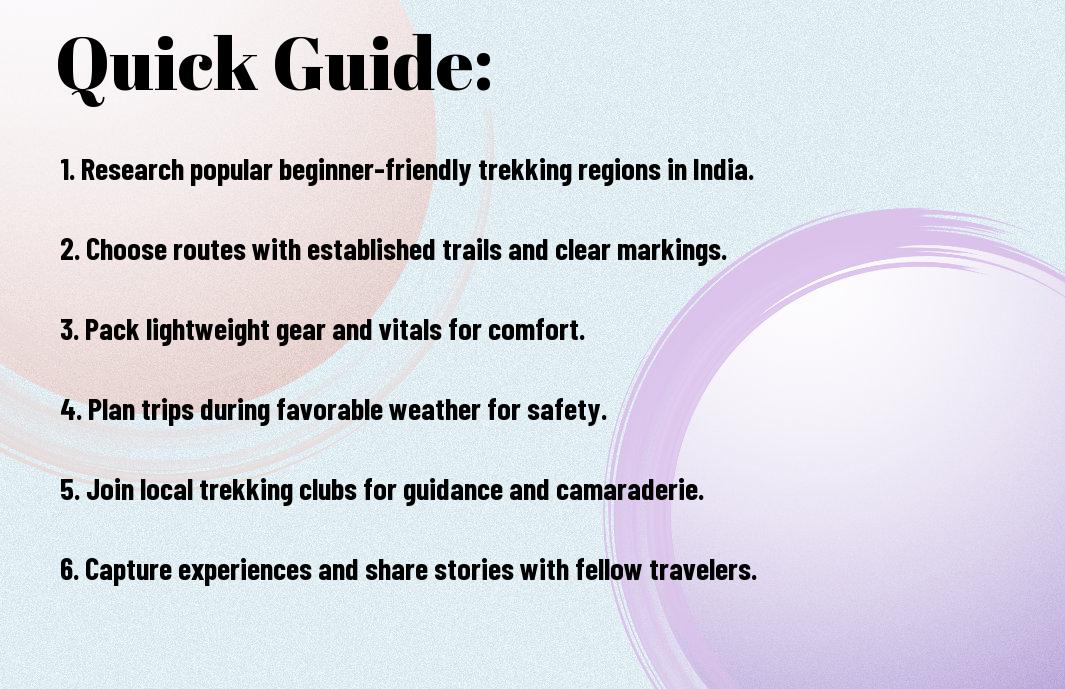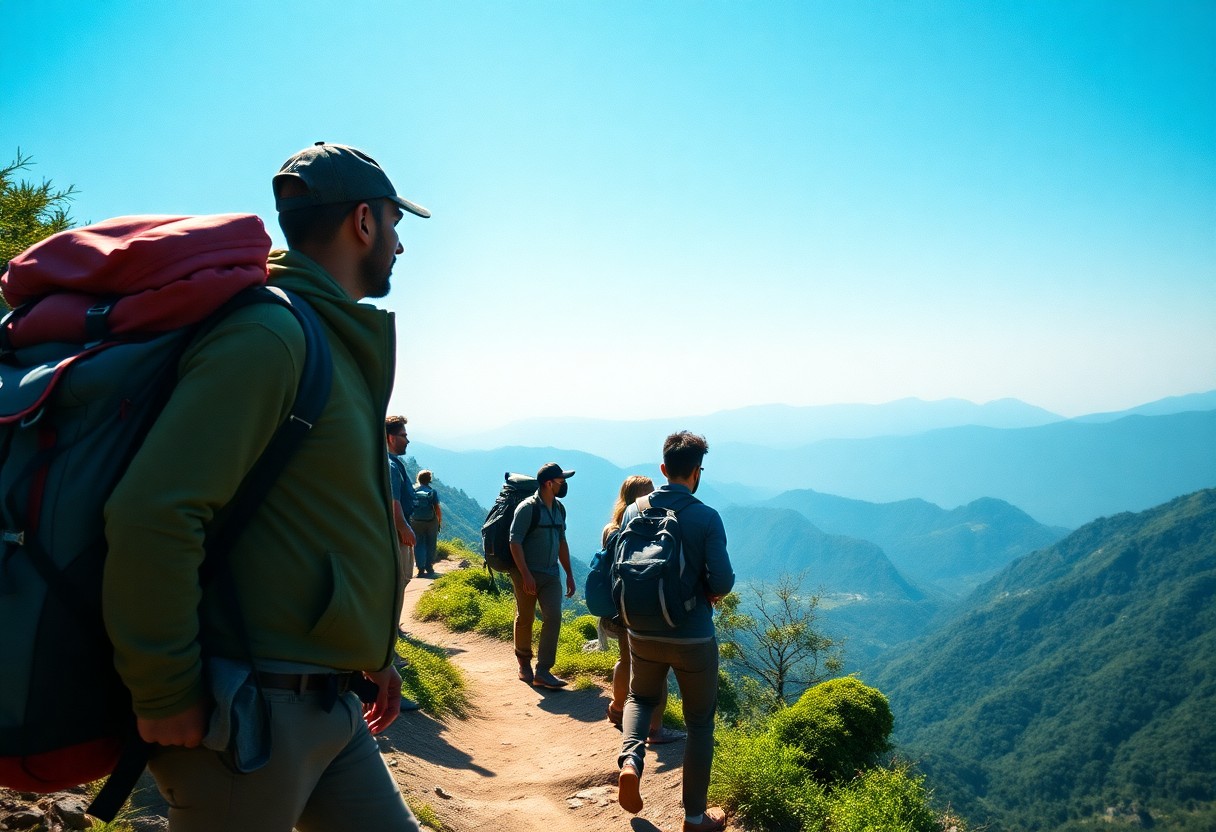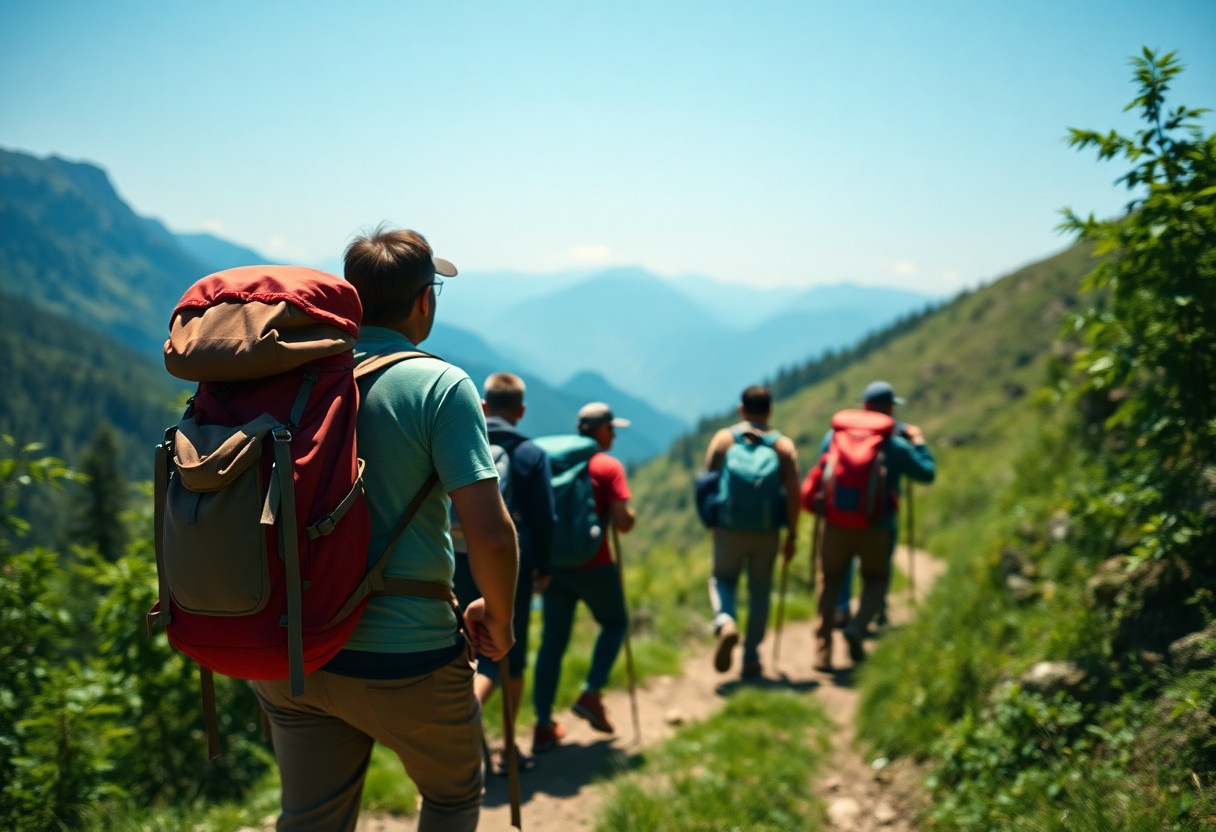You’re about to launch on an unforgettable adventure through the stunning landscapes of India! As a beginner backpacker, I understand how important it is to find the right routes that suit your experience level. In this blog post, I’ll share my favorite backpacking routes that offer breathtaking scenery, rich culture, and fantastic experiences, all tailored just for you. Whether you’re trekking through the mountains or exploring vibrant cities, you’ll find the perfect path to kick off your journey in this beautiful country!

Key Takeaways:
- India offers a variety of beginner-friendly backpacking routes, such as the popular trails in Himachal Pradesh and Uttarakhand, that provide stunning landscapes and manageable trekking experiences.
- Seasonal considerations are important; the best times for beginners to commence on these journeys typically fall between March and June or September and November, avoiding extreme weather conditions.
- Essential pre-trip planning includes researching local customs, preparing a basic itinerary, and packing appropriately to enhance the overall backpacking experience while ensuring safety and comfort.
Types of Backpacking Routes
Your adventure begins by knowing the different types of backpacking routes available for beginners. Each route offers unique experiences, catering to a variety of interests and skill levels. Here’s a quick overview:
| Nature Trails | Scenic routes through forests and hills. |
| Heritage Trails | Discover historical sites and local cultures. |
| Beach Trails | Coastal paths with stunning ocean views. |
| Mountain Trails | Challenging routes that lead to breathtaking summits. |
| City Trails | Urban explorations filled with local attractions. |
Thou can explore these trails based on your preferences and comfort levels.
Popular Trails for Beginners
For those starting out, there are several popular trails across India that are perfect for beginners. Routes like the Triund Trek in Himachal Pradesh and the Sandakphu Trek in West Bengal offer relatively easy paths with fantastic views, making them ideal for new backpackers. You’ll find well-defined trails, supportive communities, and ample information to help you navigate your journey.
Scenic Locations to Explore
To add zest to your backpacking experience, exploring scenic locations is vital. India is sprinkled with stunning landscapes, from the towering Himalayas to tranquil beaches, each offering unique adventures. Choose the sites that resonate with you, and get ready for incredible photo opportunities.
It’s crucial to plan your route according to the scenic locations you wish to explore. Place like Munnar in Kerala presents lush tea gardens, while the beaches of Goa provide a laid-back vibe. Locations such as Ladakh offer mesmerizing landscapes, contrasting the vibrant greenery of Coorg. Your journey will be enriched by the beauty surrounding you, and you’ll create memories that last a lifetime. So pack your bags, and let’s hit the trails!


Tips for First-Time Backpackers
Assuming you’re ready to hit the trails, here are a few tips to navigate your first backpacking adventure with confidence:
- Start with easier trails to build up your experience.
- Plan your itinerary and research the area well.
- Stay open to making new friends along the way.
- Keep a positive mindset to embrace the challenges.
Any question will probably lead you to wonderful learning experiences!
Essential Gear and Packing Tips
Some of the most important items you’ll need for your backpacking journey include:
- A lightweight, comfortable backpack that fits well.
- Weather-appropriate clothing and sturdy shoes.
- A reliable sleeping bag and tent for overnight stays.
- Cooking gear and portable food options.
This will ensure you’re well-equipped to tackle your adventures!
Safety Measures and Basic First Aid
Tips for staying safe on your backpacking journey include being aware of your surroundings and familiarizing yourself with the hike area. Always carry a first aid kit for unexpected situations, and make sure it contains items like band-aids, antiseptic wipes, and any personal medication you may need.
It’s wise to inform someone about your itinerary and expected return time. Familiarize yourself with common first-aid techniques and local wildlife risks. Staying hydrated, eating well, and ensuring you have a charged phone can also make a huge difference in staying safe during your adventure.

Step-by-Step Planning Guide
All my backpacking adventures in India started with careful planning. Here’s a simple breakdown to help you set the stage for your own unforgettable journey.
| Planning Steps | Description |
|---|---|
| Research Destinations | Explore various routes and select those that resonate with you. |
| Set a Budget | Determine how much you are willing to spend on your trip. |
| Create a Packing List | List crucial items to ensure nothing is left behind. |
| Check Weather Conditions | Look up the weather to gear up appropriately. |
Choosing the Right Route
Some routes might seem inviting, while others may be more challenging. It’s crucial to gauge your comfort level and experience. I advise considering your fitness routine and the types of scenery you enjoy, whether it’s mountains, forests, or coastal paths.
Itinerary Planning for Success
Choosing a well-structured itinerary is the backbone of a successful trip. This not only enhances your experience but also alleviates unexpected surprises along the way. Break down your journey day by day, including travel times and rest points, to keep everything organized.
Step-by-step, plan your itinerary by mapping out each day’s goals and activities. Make sure to include time for exploring and soaking in the local culture, as this is often what I cherish the most. An itinerary that balances travel times with free exploration lets you enjoy your adventure without feeling rushed.
Factors to Consider Before You Start
Despite the excitement of backpacking in India, it’s necessary to evaluate a few factors before you hit the trails. Consider these points:
- Your fitness level
- The distance and duration of the hike
- Your experience with camping
- The safety of the region
Knowing these aspects will help you choose the best route suited to your skills and preferences.
Weather and Seasonality
Seasonality plays a significant role in planning your backpacking trip in India. Different regions experience varying weather patterns, so it’s necessary to check the best seasons for your chosen route. For instance, the Himalayan trails are most enjoyable from late spring to early autumn, while the Western Ghats are best explored during the monsoon months for lush greenery.
Terrain and Difficulty Level
If you’re new to backpacking, understanding the terrain and difficulty level is vital for a successful adventure. Different trails present unique challenges, from steep ascents to rocky paths, each impacting your overall experience.
To make the most of your journey, you should choose trails that match your fitness and comfort levels. Start with well-marked, graded paths that have less elevation and a more manageable distance to help build your confidence. As you gain experience, you can gradually tackle more complex terrains and challenging routes, ensuring that your backpacking journey remains enjoyable and fulfilling from start to finish.
Pros and Cons of Backpacking in India
Keep in mind that backpacking in India has its ups and downs, making it important to weigh both sides before you begin on your adventure.
| Pros | Cons |
|---|---|
| Rich cultural experiences | Language barriers |
| Diverse landscapes | Overcrowding in some areas |
| Affordable travel options | Unpredictable weather |
| Delicious local cuisine | Sanitation issues in certain areas |
| Friendly locals | Transportation challenges |
| Rich historical sites | Wildlife encounters |
Advantages of Exploring Indian Trails
Exploring the trails in India is like stepping into a vibrant world filled with stunning scenery and diverse cultures. Each path leads to hidden gems, from ancient temples to breathtaking mountain vistas, allowing you to immerse yourself in the beauty of nature. The friendly locals often enhance your journey, offering insights and stories that make every hike truly special. You’ll find that the diversity of flora and fauna adds another layer of excitement, making your backpacking experience memorable and enriching.
Challenges to Be Aware Of
Backpacking in India can present various challenges, which is why being prepared is imperative. From crowded markets to navigating local transportation, you might encounter situations that can be overwhelming. Each region has unique customs, and understanding them can help bridge gaps and enrich your experience. Safety concerns, especially in more remote areas, require vigilance, and hygienic conditions in some places may not meet your expectations. Being aware of these potential hurdles will ensure that you have a fulfilling adventure while minimizing any stress along the way.
Aware that not every experience will be smooth sailing is part of the adventure. You may face unpredictable weather or get lost in the hustle and bustle of busy streets. Some trails might be poorly marked, and transport options can be tricky to navigate. By embracing these challenges with an open mind and staying flexible, you can turn potential stress into memorable stories to share. Just remember, every obstacle you overcome adds to your journey and makes it all the more rewarding!
Resources and References
After exploring the best backpacking routes in India, I highly recommend checking out Backpacking India: A Travel Guide & Itinerary. This guide is packed with insights and tips that will make your journey even smoother and more enjoyable. Whether you’re a novice or just looking to hone your skills, these resources will be invaluable as you set off on your adventure.
Books and Online Guides
While preparing for my backpacking trips, I found that a mix of books and online guides truly enhances the experience. Books that discuss the culture, geography, and itineraries of India, alongside reputable online resources, can provide a deeper understanding of the places you’ll visit. Utilizing travel blogs and websites can also help keep your plans up-to-date with the latest information.
Local Communities and Groups
Online communities and groups serve as fantastic support systems for budding backpackers like you and me. They not only offer firsthand experiences and advice but also create opportunities to connect with fellow travelers. From Facebook groups to travel forums, you’ll find a welcoming space to ask questions, share stories, and find travel buddies.
Communities dedicated to backpacking in India often share invaluable tips, such as recommended routes and recent travel insights. These groups can be an excellent resource for finding like-minded individuals who are eager to explore together. Engaging with these communities can also lead to discovering hidden gems that aren’t featured in travel guides, allowing you to create a more personalized and enriching journey.
Summing up
Now that I’ve shared some of the best backpacking routes in India for beginners, I hope you’re feeling inspired to hit the trails. Whether you’re drawn to the serene hills of Himachal Pradesh or the stunning landscapes of Uttarakhand, there’s a perfect adventure waiting for you. Each journey offers unique experiences to connect with nature and meet fellow travelers. So, grab your backpack, lace up those shoes, and get ready to create unforgettable memories on your first backpacking trip!
FAQ
Q: What are some of the best beginner-friendly backpacking routes in India?
A: There are several stunning backpacking routes suitable for beginners in India. One of the most popular is the Triund Trek in Himachal Pradesh, which offers breathtaking views of the Dhauladhar mountain range and is a manageable trek taking about 4-6 hours to reach the summit. Another great option is the Valley of Flowers in Uttarakhand, renowned for its vibrant blossom trails and easy walking paths, making it accessible for novice trekkers. Lastly, the Kudremukh Trek in Karnataka, with its lush green landscapes and relatively short duration, also invites beginners to explore nature without too much strain.
Q: What should I pack for my first backpacking trip in India?
A: Packing smart is crucial for a comfortable backpacking experience. Beginners should focus on crucials such as a lightweight tent, sleeping bag, and sleeping mat. Clothing made of moisture-wicking materials and weather-appropriate layers is important to accommodate varying temperatures. A first-aid kit, water purification tablets, and a reusable water bottle are also vital for safety and hydration. Don’t forget crucials like snacks, a multi-tool, and a compass or map. Keeping your backpack light and well-organized will greatly enhance your trekking experience.
Q: How can I ensure my safety while backpacking in India as a beginner?
A: Ensuring safety while backpacking requires careful planning and awareness. Firstly, research your chosen route thoroughly, including the weather conditions, difficulty level, and any required permits. It’s advisable to travel with a buddy or group, especially for longer treks. Inform someone about your itinerary and expected return time. Carrying a charged mobile phone with offline maps and emergency contacts is also recommended. Always pay attention to trail signs and markings, and steer clear of venturing off established paths. Lastly, trust your instincts; if something feels wrong, it’s okay to turn back or seek help.
